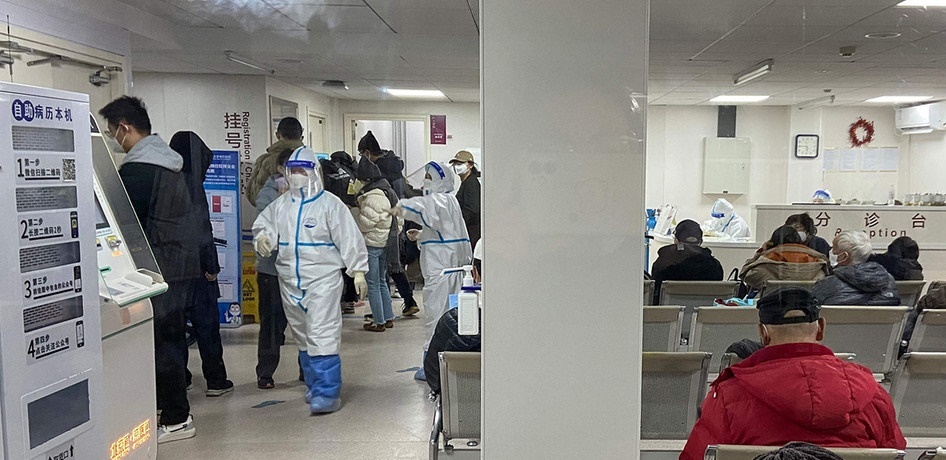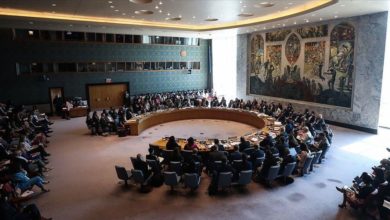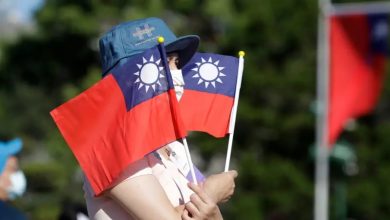
As the government downplays the highly contagious virus mutation, popular uncertainty is growing.
In China, despite the falling number of cases, concerns about corona infections are growing after the government’s strict zero-Covid policy was relaxed. Many hospitals in the country have to cope with an onslaught of infected people. In metropolises like Beijing, Guangzhou, Chengdu or Shijiazhuang, hospitals experienced “the first shock of a gigantic wave of infections and a shortage of health workers,” wrote the renowned business magazine “Caixin” and spoke of “Covid chaos”. Emergency rooms are overcrowded.
In the capital Beijing, about 80 people huddled in the cold outside a fever clinic in the posh Chaoyang district as ambulances drove by. Similar queues formed outside clinics in the commercial hub of Wuhan, where the virus was first detected three years ago.
Working despite infection
A big problem is separating Covid cases from other patients and protecting your own staff. Infected people often infect doctors and other employees. “Our hospital follows strict protective measures every day, but with the increase in patients, the infection rate among our medical staff is high,” Zhongguo Shibao newspaper quoted a doctor at a hospital in southern Guangdong Province as saying.
The previous strict precautionary protocol is already being partially relaxed. A doctor in Beijing reported that she had to continue working despite her own infection. The definition of contact person is also broader than before. Where it is still strictly applied, large parts of the doctors and nurses are not on duty because they are infected themselves or are in isolation as close contacts.
Corona app will be switched off
The government also announced the shutdown of the main tracking app. According to the authorities, the nationwide Corona app, which uses the cell phone signal to check whether users have been in a risk area, will go offline on Tuesday.
For two and a half years, the app was a central part of the Chinese government’s strict zero-Covid policy. Millions of people depended on their Green Arrow when traveling between provinces, visiting events or shopping malls, or entering public places.
Chaos after U-turn
In a radical about-face, the government largely abolished its rigorous zero-Covid strategy last week under pressure from anti-government protests and a flagging economy. Lockdowns have been ended, the strict obligation to test and forced quarantine or isolation of contacts has been largely relaxed. Even before that, there had been signs that the number of infected people was increasing noticeably and that the testing capacities and official tracking of the infections had long since been unable to keep up.
So far, after positive corona tests, entire towns and districts have been cordoned off, resulting in increased work and production losses. Authorities continue to advise mask wearing and vaccinations, especially for the elderly. However, since the People’s Republic has hardly come into contact with the virus due to the strict measures taken, analysts believe that China is poorly prepared for a wave of infections that could put pressure on the fragile health system and bring the economy to a standstill.
“Omicron mutation is highly contagious”
“The current omicron mutation is highly contagious,” leading Chinese epidemiologist and government adviser Zhong Nanshan explained the government’s 180-degree turnaround in an interview. The epidemic is currently spreading very quickly. “Under such circumstances, it is difficult to completely break the chains of transmission – no matter how strong the prevention and control.” The surprising change of course caught many hospitals largely unprepared.
After the authorities issued urgent warnings about Omicron in recent months, state media are now downplaying the danger of the virus and comparing the infection with ordinary flu. This causes great uncertainty. People have also been strongly warned not to go to hospitals unless absolutely necessary. Rather, patients should cure the infection themselves at home with flu medication. Since there are no resident doctors in China, many Chinese go to the hospital to see a doctor, even if they have minor problems.
Peak of the wave in a month
“Please protect yourself,” the management of a residential complex in Beijing’s Dongcheng district warned residents and said almost all of their employees were infected. “Try to go out as little as possible,” said the online service WeChat. “Be the first person to take responsibility for your own health, let’s tackle this together.”
The number of local cases has declined in the past few days since peaking at the end of November. According to experts, however, the declining numbers are due to the omission of the test requirements. The number of patients awaiting admission to emergency and fever clinics is increasing, according to a doctor working in the respiratory department of a Beijing clinic, quoted by the state-backed Global Times newspaper. The head of a team of experts in Shanghai said the current outbreak could peak in a month.
Protests in China: Party leadership threatens to “tough crackdown”




